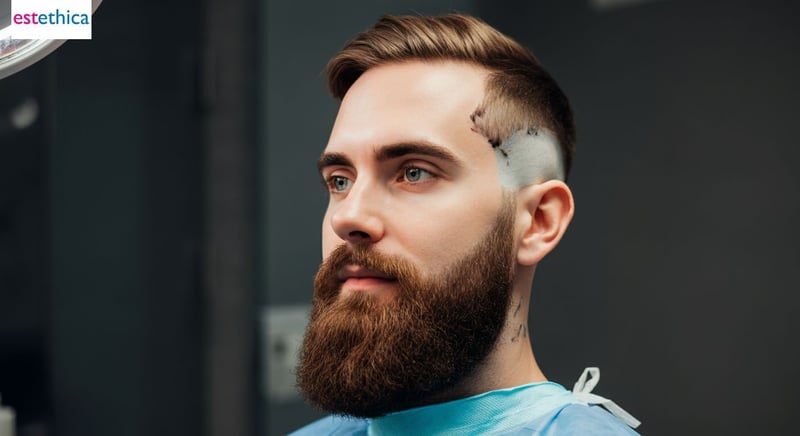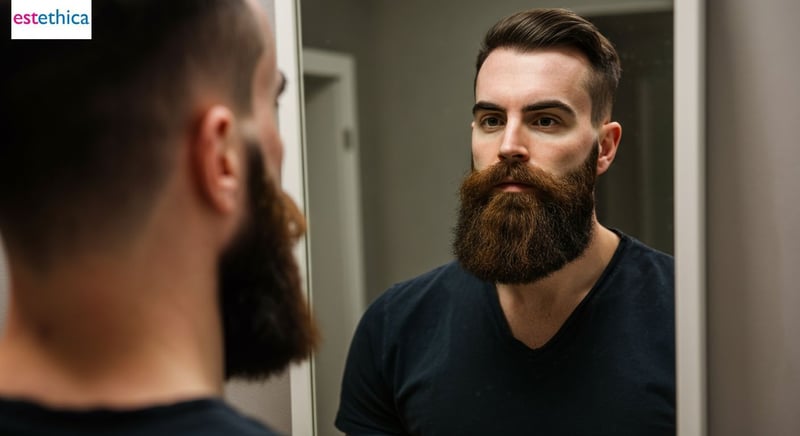Unlock Your Style: The Ultimate Beard Transplant Guide
Discover how a beard transplant can unlock your style potential, offering insights into procedure details, cost, and aftercare for a stylish transformation.
Beard transplantation has become a popular choice for many looking to enhance their facial hair aesthetics. This guide will delve into everything you need to know about the procedure, helping you make an informed decision. From understanding what a beard transplant involves to identifying the right surgeon for the job, we have you covered. Unlock your style potential and elevate your facial hair game with this ultimate guide.
Understanding Beard Transplantation: What You Need to Know
Why Beard Transplants Are Gaining Popularity
In recent years, beard transplants have surged in popularity, largely due to evolving societal trends that celebrate diverse facial hairstyles. As modern beard styles become more mainstream, individuals seek ways to enhance their facial aesthetics. A beard transplant, often referred to as a beard implant, offers a solution for those unable to naturally grow a full beard. This procedure involves transferring hair from one part of the body, typically the scalp, to the face, creating a fuller, more defined beard. The demand for facial hair restoration is also fueled by the influence of celebrities who sport well-groomed beards, further normalizing and glamorizing the look.
Common Misconceptions About Beard Transplants
- Many believe beard transplants are painful, but modern techniques ensure minimal discomfort.
- Some think results are temporary; however, beard transplants are generally permanent.
- There's a misconception that recovery is lengthy, yet most patients resume normal activities quickly.
Understanding these misconceptions helps individuals make informed decisions about undergoing a beard transplant. For more insights, you can explore Unlocking Beard Transplant Secrets: Your Essential Guide.
The Beard Transplant Process
- Consultation: Discuss goals and assess suitability with a specialist.
- Procedure: Hair follicles are extracted and implanted into the beard area.
- Recovery: Follow post-procedure care for optimal results.
Each step is crucial to ensure the success of the transplant, with the ultimate goal of achieving a natural-looking beard. By understanding the process, individuals can better prepare for what to expect and how to care for their new beard.

How Beard Transplants Work: A Step-by-Step Insight
Pre-Operative Preparations for a Successful Beard Transplant
Before undergoing a beard transplant, patients must engage in thorough pre-operative preparations. This phase involves a detailed consultation with a specialist to discuss expectations and assess the suitability of the procedure. During this consultation, the specialist evaluates the donor area, typically the scalp, to ensure there are enough healthy hair follicles for transplantation. Additionally, patients are advised to avoid certain medications and substances that might interfere with the procedure. For instance, refraining from smoking and alcohol consumption can significantly enhance the healing process. These preparations are crucial for minimizing risks and optimizing the outcome of the beard transplant.
Understanding the Surgical Techniques: FUE vs. DHI
- FUE (Follicular Unit Extraction): This technique involves extracting individual hair follicles from the donor area and implanting them into the beard region. It is known for minimal scarring and a quicker recovery time.
- DHI (Direct Hair Implantation): In this method, hair follicles are directly implanted using a specialized tool, allowing for precise placement and natural-looking results.
- Natural Appearance: Both techniques aim to achieve a seamless integration with existing facial hair, enhancing the overall aesthetic.
Choosing between FUE and DHI depends on individual needs and the desired outcome. Each technique offers unique benefits, and the decision is often guided by the specialist's recommendation based on the patient's specific circumstances.
Post-Operative Care for Optimal Results
- Immediate Care: After the procedure, patients should follow specific instructions to care for the transplanted area, including gentle cleaning and avoiding direct sunlight.
- Monitoring Healing: Regular follow-up appointments are essential to monitor the healing process and address any concerns promptly.
- Long-Term Maintenance: Maintaining a healthy lifestyle and following recommended grooming practices can enhance the longevity of the transplant results.
Proper post-operative care is vital for ensuring the success of a beard transplant. By adhering to the specialist's guidelines, patients can enjoy a fuller, natural-looking beard that complements their facial features.

Choosing the Best Beard Transplant Surgeons for Optimal Results
Key Qualities of Top Beard Transplant Surgeons
When selecting a surgeon for a beard transplant, several critical qualities should be considered. First, their experience in facial hair restoration is paramount. Surgeons with extensive experience in beard implants are more likely to deliver natural-looking results. Additionally, credentials such as board certification in dermatology or plastic surgery can indicate a high level of expertise. Another important factor is the surgeon's reputation, which can be gauged through past patient reviews and testimonials. These reviews often provide insights into the surgeon's skill and patient care quality.
Understanding Beard Transplant Costs
- Experience Level: Surgeons with more experience may charge higher fees.
- Clinic Location: Costs can vary significantly based on geographic location.
- Procedure Complexity: More complex cases may incur additional costs.
While the cost of a beard transplant is a consideration, it should not be the sole factor in choosing a surgeon. Prioritizing quality and expertise ensures the best outcome for your facial aesthetic enhancement.
Steps to Finding the Right Beard Transplant Clinic
- Research: Begin by researching clinics that specialize in beard transplants.
- Consultation: Schedule consultations to discuss your goals and assess the clinic's approach.
- Decision: Choose a clinic that aligns with your expectations and offers comprehensive care.
Finding the right clinic involves thorough research and consultations. Clinics like estethica are known for their commitment to aesthetic excellence, providing world-class medical care tailored to individual needs. By following these steps, you can ensure a successful beard transplant experience.

Beard Transplant Care: Seasonal Tips for Lasting Success
Adapting Beard Care to Seasonal Changes
Post-surgery beard care requires adaptation to seasonal changes to ensure optimal healing and growth. In summer, increased humidity can affect the transplanted area, necessitating a focus on keeping the skin clean and dry. Conversely, winter's dry air may lead to skin irritation, making moisturizing crucial. Understanding these seasonal impacts helps maintain the health of your new beard.
Seasonal Beard Care Strategies
- Summer Care: Use lightweight, non-greasy moisturizers to prevent clogged pores.
- Winter Recovery: Apply hydrating oils to combat dryness and flakiness.
- Spring Transition: Gradually adjust your skincare routine as temperatures rise.
Implementing these strategies ensures your beard remains healthy and vibrant throughout the year, regardless of the climate.
Steps to Optimize Beard Growth Year-Round
- Regular Trimming: Maintain shape and encourage even growth by trimming regularly.
- Balanced Diet: Consume nutrients that promote hair health, such as biotin and omega-3 fatty acids.
- Consistent Care Routine: Adapt your grooming routine to seasonal needs for sustained results.
By following these steps, you can enhance the longevity and appearance of your beard transplant, ensuring it complements your facial features beautifully across all seasons.
Advanced Techniques in Beard Transplantation
Excellence in Beard Transplant Care and Results
Frequently Asked Questions
What is a beard transplant and why is it popular?
How do FUE and DHI techniques differ in beard transplantation?
What should I consider when choosing a beard transplant clinic?
What are the post-operative care steps for a successful beard transplant?
How does seasonal change affect beard transplant care?
Discover the path to your healthiest and most beautiful self with estethica's award-winning services. Call now for a free consultation and experience world-class care.
📞 Call for Your Free Consultation Today!